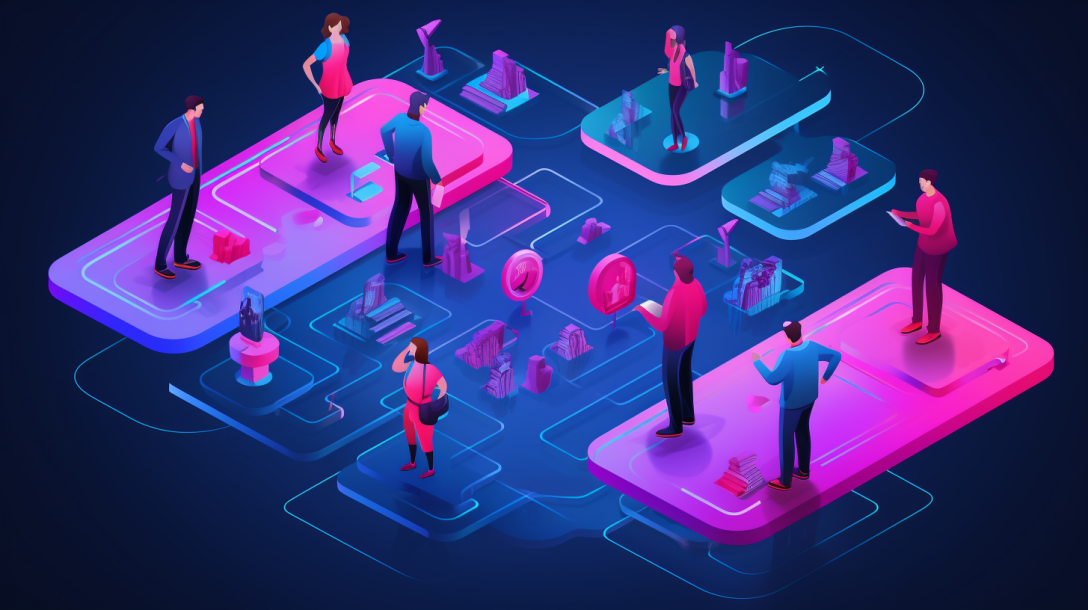B2B Personalization: An Ultimate Guide With Examples

What exactly is B2B marketing personalization, and why are more companies turning to this approach?
In simple terms, B2B personalization tailors content, messaging, and the overall experience to individual buyers based on their behaviors and pain points. It matters because B2B buyers now expect highly relevant, personalized content—no more one-size-fits-all marketing.
Here’s why that’s important: Companies are realizing that personalized marketing increases engagement, boosts conversion rates, and creates better customer experiences. With the right personalization strategies, businesses can deliver targeted solutions at the right time, improving outcomes across the board.
B2B personalization statistics
77% of B2B buyers say they are more likely to engage with companies that understand their needs through personalized experiences. This highlights how crucial it is to tailor content based on a buyer’s specific needs and pain points to drive engagement.
B2B marketers using personalized web experiences see an average 20% increase in sales, making it clear that personalization strategies directly impact conversion rates and revenue growth.
Personalization can increase overall ROI by up to 8x for companies that fully implement data-driven personalization strategies. This is particularly impactful in account-based marketing where highly relevant content tailored to individual B2B buyers can lead to significant gains.
B2B website personalization examples
Here are some standout B2B website personalization examples that show how companies effectively engage their B2B buyers:
Salesforce
Salesforce uses personalized content based on a visitor’s industry, company size, and their specific role within the business. When a potential customer visits the Salesforce website, they are shown tailored content and resources that address their industry’s pain points.
This approach leads to higher conversion rates by ensuring that users receive relevant information based on their needs.
HubSpot
HubSpot personalizes its website experience by using customer data to suggest the most appropriate products and services based on a user’s previous interactions.
For example, if a visitor has already engaged with multiple blog posts related to marketing automation, HubSpot will highlight related tools or offer a demo specific to that area of interest.
Metadata.io
Metadata uses firmographic data to personalize landing pages. For instance, when a visitor from a specific company like Microsoft lands on their site, the page dynamically updates to show Microsoft-specific case studies, social proof, and tailored messaging.
This approach helps Metadata.io build credibility and relevance with high-value target audiences, leading to more qualified leads.
Marketo (by Adobe)
Marketo uses real-time personalization to display relevant content based on user behavior. When a visitor interacts with specific marketing materials on their website, Marketo adjusts the content they see on subsequent visits.
For instance, a visitor exploring lead nurturing solutions will be shown personalized product pages, case studies, and webinars focused on that subject. This data-driven personalization strategy helps Marketo keep potential clients engaged.
Drift
Drift is a leader in conversational marketing and leverages personalization strategies by using targeted chatbots. These bots can recognize returning visitors and provide tailored suggestions based on previous interactions.
For example, if a visitor explored a specific feature during a previous session, the bot might ask if they want to schedule a demo for that product or offer a related whitepaper, improving the overall customer experience.
Cisco
Cisco personalizes its website based on the visitor’s geographic location and industry. When someone from the healthcare sector visits Cisco’s website, the content, case studies, and solutions displayed are specific to healthcare challenges and needs.
By providing highly relevant content, Cisco ensures that visitors feel understood, increasing the likelihood of moving further down the sales funnel.
Mailchimp
Mailchimp uses B2B website personalization to deliver a unique experience for each visitor based on their company size and marketing needs. For example, small businesses see tools and pricing plans that cater to their needs, while enterprise users are shown more advanced features and scalable solutions.
Mailchimp also personalizes their educational resources, suggesting personalized content like case studies and tutorials that match the user’s interests. This level of personalization boosts engagement and helps move prospects further along the sales funnel, driving higher conversion rates.
Why B2B Website Personalization is Getting More Important
B2B marketing personalization is no longer a luxury—it’s becoming a necessity. B2B buyers expect personalized experiences just like consumers in B2C markets. The ability to tailor content to individual needs, behaviors, and pain points can make or break a company’s marketing strategy. With more businesses adopting account-based marketing approaches, personalized interactions are critical for building trust and creating meaningful customer experiences.
The reason personalization is so essential today lies in the evolving expectations of B2B buyers. They want real-time, relevant content that speaks directly to their pain points and unique needs. In fact, 77% of B2B buyers say they won’t engage with a brand that doesn’t deliver relevant, personalized content(
When done right, personalization leads to improved conversion rates, increased customer data utilization, and stronger personalization efforts across touchpoints.
What You Should Personalize on a B2B Website
There are several elements on a B2B website that can—and should—be personalized to meet the expectations of your target audience:
User Experience (UX): Even the design, layout, and navigation can be adjusted based on customer data to improve the user experience for different personas, improving the overall journey across the site.
Landing Pages: Tailoring landing pages based on the visitor’s company, industry, or location can significantly improve engagement. Personalization strategies should address the specific pain points of the visitor.
Content and Product Recommendations: Suggest personalized content, like case studies or product demos, based on the user’s browsing behavior. This ensures that the content aligns with their needs and interests.
Calls to Action (CTAs): Dynamic CTAs that change based on a visitor’s interactions or position in the sales funnel can guide them toward the next logical step, improving conversion rates.
Email and Retargeting Campaigns: Personalized emails and ads based on previous visits or content engagement can remind users to come back and explore more, creating continuous engagement.